
Labor Day is one of those times when Larry and I are itching to go somewhere to enjoy the long weekend and the last days of summer, but are always frustrated knowing that there will be traffic and crowds anywhere within driving distance of the DC area. This year, Larry had been working long hard hours and weekends all summer and we were in extra need of a last minute getaway. We nixed the idea of going to the beach, but still desired to go somewhere that we could sit on the water and eat seafood. If only there was a deserted island within a few hours of Northern Virginia...
Ah, but there is. Sort of. Actually, there are two. Smith Island in Maryland and Tangier Island in Virginia are two tiny islands in the middle of the Chesapeake Bay. Removed from the mainland by an hour ferry ride, these islands have a unique culture that dates back to the 1600s when British settlers first arrived.
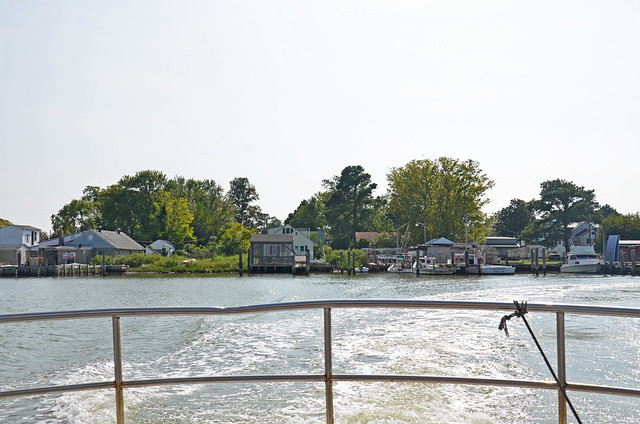
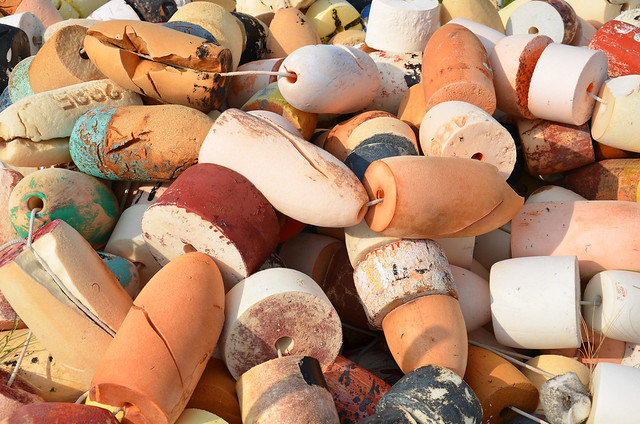
I'd heard that there were no cars on the islands and that the natives spoke with a Shakespearean English accent and had always been curious to visit. I didn't really have a preference as to whether we went to Smith or Tangier, but since we share a name with Smith Island and since it is famous for its caaaaaake, the scales were tipped in Smith's favor. Also, we were able to find a place to stay just three days ahead of time, when we hatched this crazy last minute plan of ours. Our desire to visit a remote island and eat seafood by the water was becoming a reality.
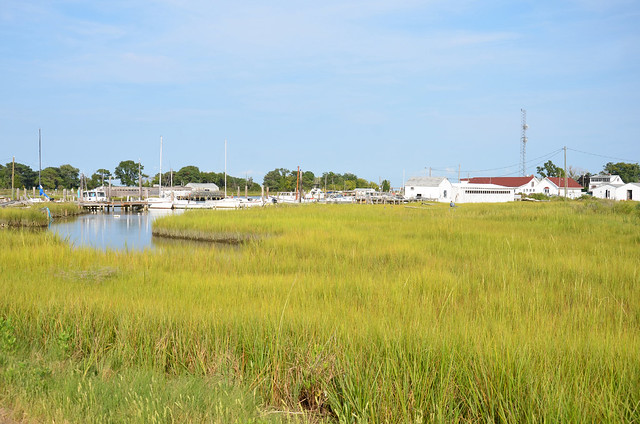
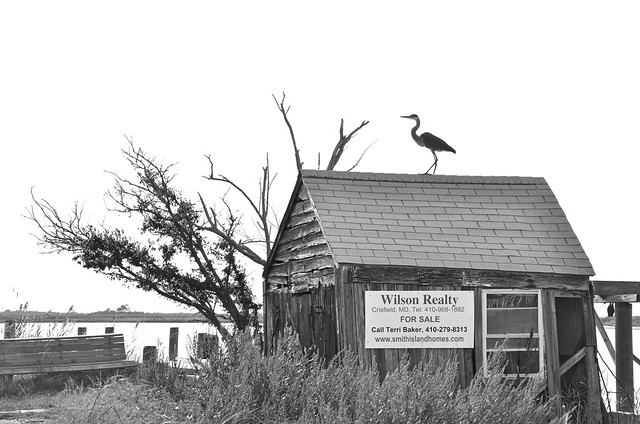
Today, Smith Island occupies 4.5 square miles of land and has 240 residents. The natives live a simple life and rely on the Bay for their survival - crabbing is pretty much the only industry. While the Islanders definitely have an accent and can trace their ancestry back to settlers arriving from Cornwall, the Smith Island accent is not Elizabethan. It is its own unique vernacular - an accent that linguists refer to as Tidewater English. As for transportation, there are a few cars on the island, but they don't have license plates and aren't required to be registered (or...inspected).
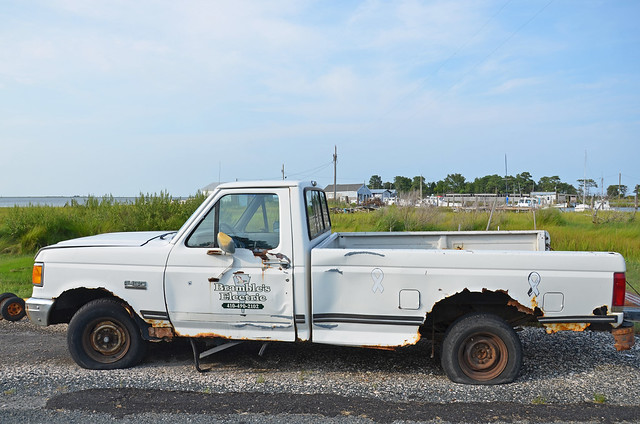
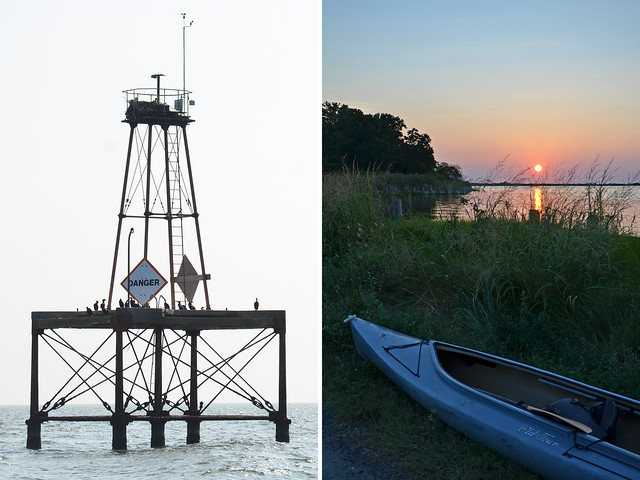
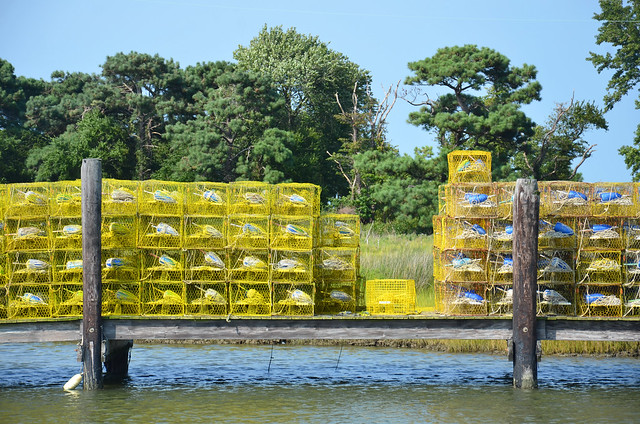
Boats are definitely the number one mode of transportation, but if you need to get around on land, most people walk, ride bicycles (one-speeds), or travel by golf cart. There is one road that connects the community of Ewell (where we stayed) to Rhodes Point which is 2 miles away.
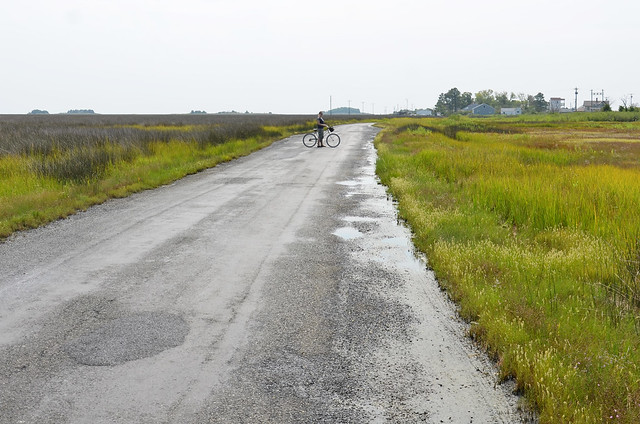
There just aren't a whole lot of places to go on this island. There are no banks. No grocery stores. No medical facilities. You can't buy alcohol. Only 12 children attend school on Smith Island. And since it is difficult to get new things to the island, little is discarded. The people have to be innovative to survive. I saw roofs held on with binder clips and gates held closed with pieces of telephone wire. This made for great photography, as I am attracted to taking pictures of things that are gritty, industrial, and a little run down.

Anything that can't be scavenged or reused is taken to the "incinerator" - a pile of burning trash along the side of the road (which is also a great source of entertainment for the local children).
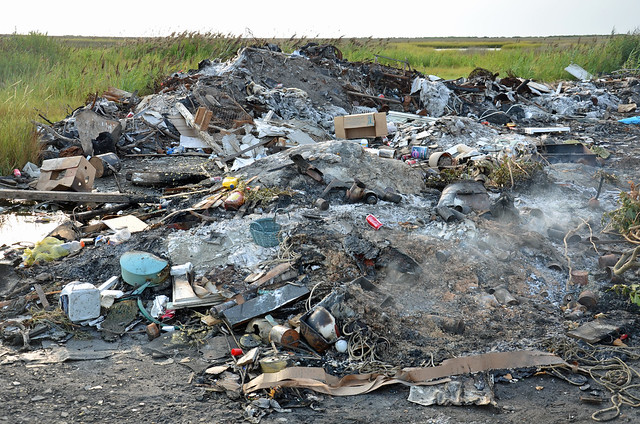
The incinerator.
Several times when we rode by, there were actual flames jumping out of the trash pile and
children throwing cantaloupes into the fire, followed by fist pumps and "That cantaloupe is DEAD!"
children throwing cantaloupes into the fire, followed by fist pumps and "That cantaloupe is DEAD!"
There are two places to eat, but they are only open from 11-4, so you can't eat breakfast or dinner out. (But while they are open, you can stuff your face with delicious fresh Maryland blue crab that was caught locally that morning and have a slice of that famous Smith Island cake for dessert! Yum and yum!)
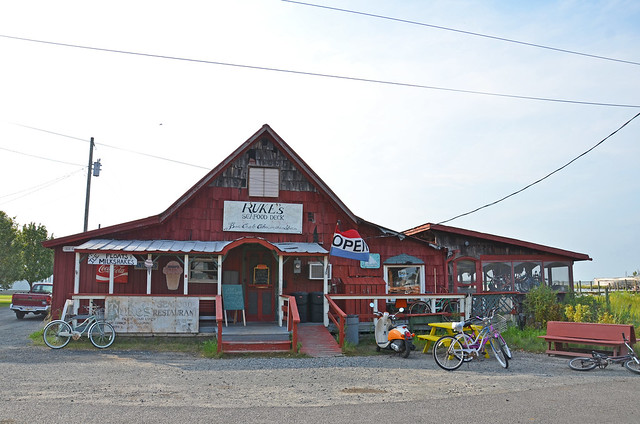
Ruke's, serving up crabcakes and softshell crabs from 11-4.
Those Smith Islanders are onto something with their simple way of life and they were the most friendly people we've ever met. Everyone stopped to greet us, help us, offer us advice or directions (not that you could get lost), or talk about crabbing. The first mate of the ferry that took us to the island threw our kayak in the bed of his pickup truck and dropped it off at the cottage where we were staying. Residents stopped us on the street and said "Oh, you're the people staying at Cindy's!" When we were unsure of the ferry schedule on the way back (there's no cell service on the island), the waitress in the restaurant picked up the phone and called the captain for us. I met a fellow artist on the ferry ride over and another when we reached shore, both of whom invited me to stop by their studios. A stranger saw us struggling with our tandem kayak and offered to let us borrow his two singles. A woman on the ferry told us "Susan makes pizzas on Friday nights - you should stop by." (What?! Who is Susan and are we just supposed to drop by a stranger's place for dinner?!) We were floored and charmed by the hospitality. Small town culture does exist. Everyone knows everyone. It was like living in a book. What a refreshing break from life in DC!
None of these descriptions are meant to be critical - this is just the way of life on Smith Island. It feels like you are experiencing a different time period and it really made me evaluate what is important (food, shelter, companionship) vs. materialistic/superfluous (everything else) in my own life.

A remote island where there is nothing to do may seem like a strange place to go for vacation, but we loved it. No doubt, Smith Island is not the perfect travel destination for everyone, but we craved an escape from the suburban hubbub, and a taste of the simple life. It was definitely the most relaxing vacation we've ever had. There was little to do and no decisions to be made, so we just sat and relaxed.
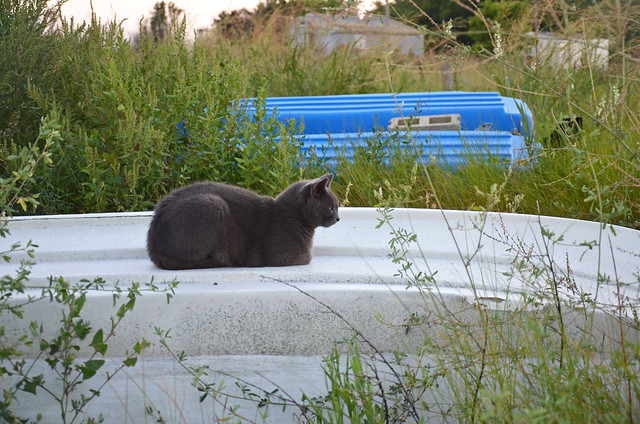
More photos of how we spent our time on the island coming up, next...
But for now - Life List #35: Go to an island in the Chesapeake Bay? Check plus!
(P.S. Some amazing photos of Smith Island by photographer Jim Lo Scalzo are here. Why didn't I see the white peacock?!)

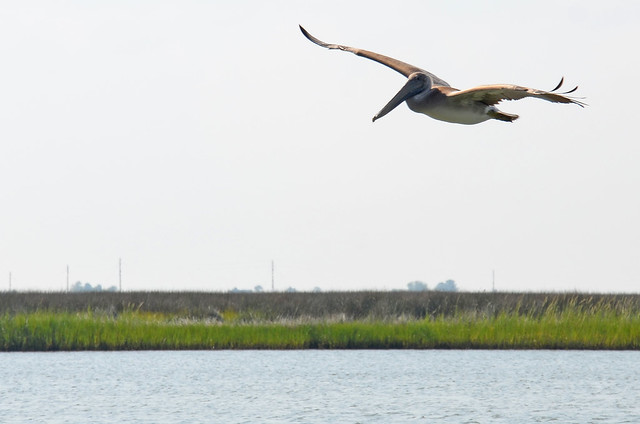


1 comment:
Um, hell yes. This rocks my world!
Post a Comment